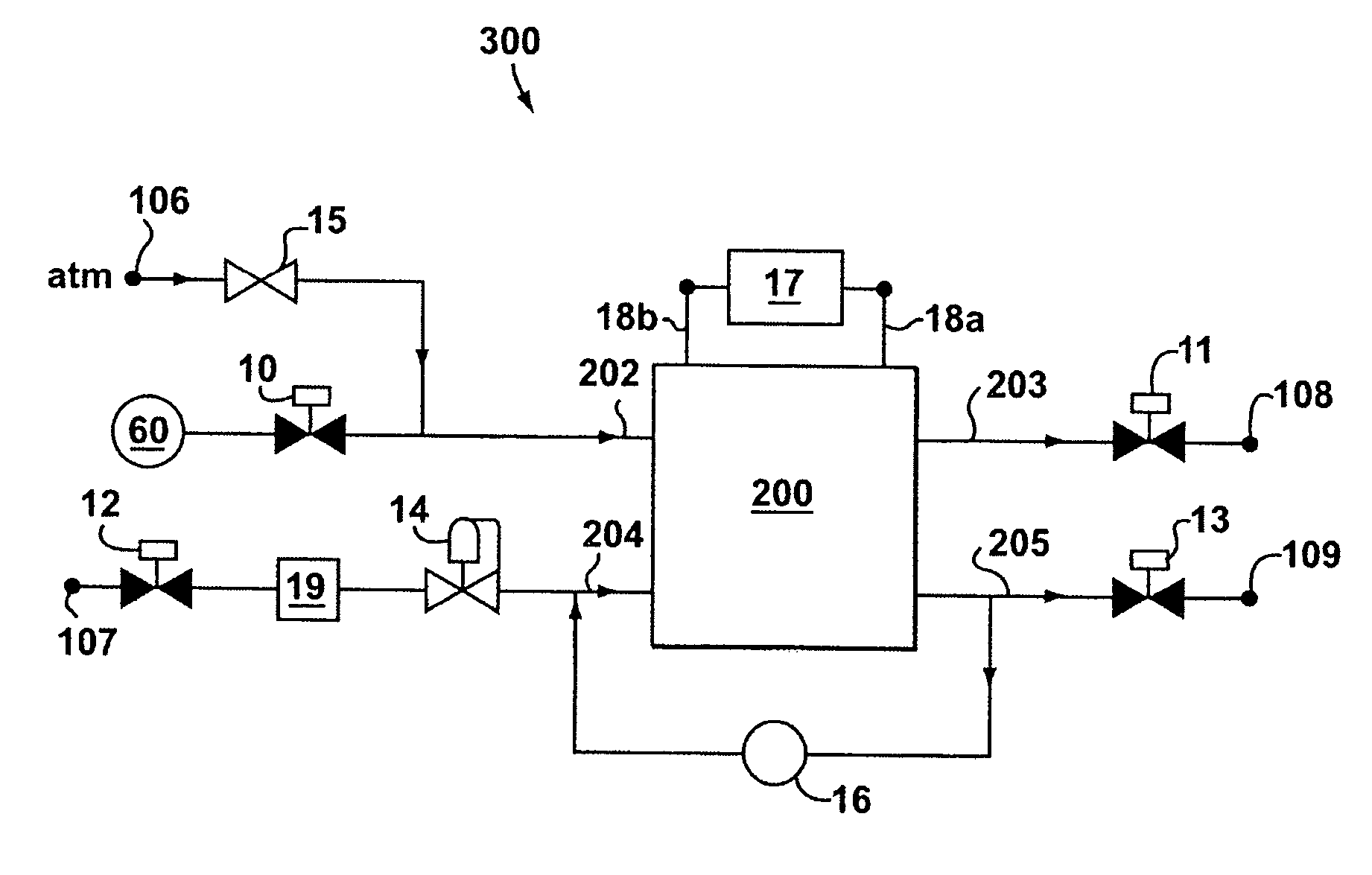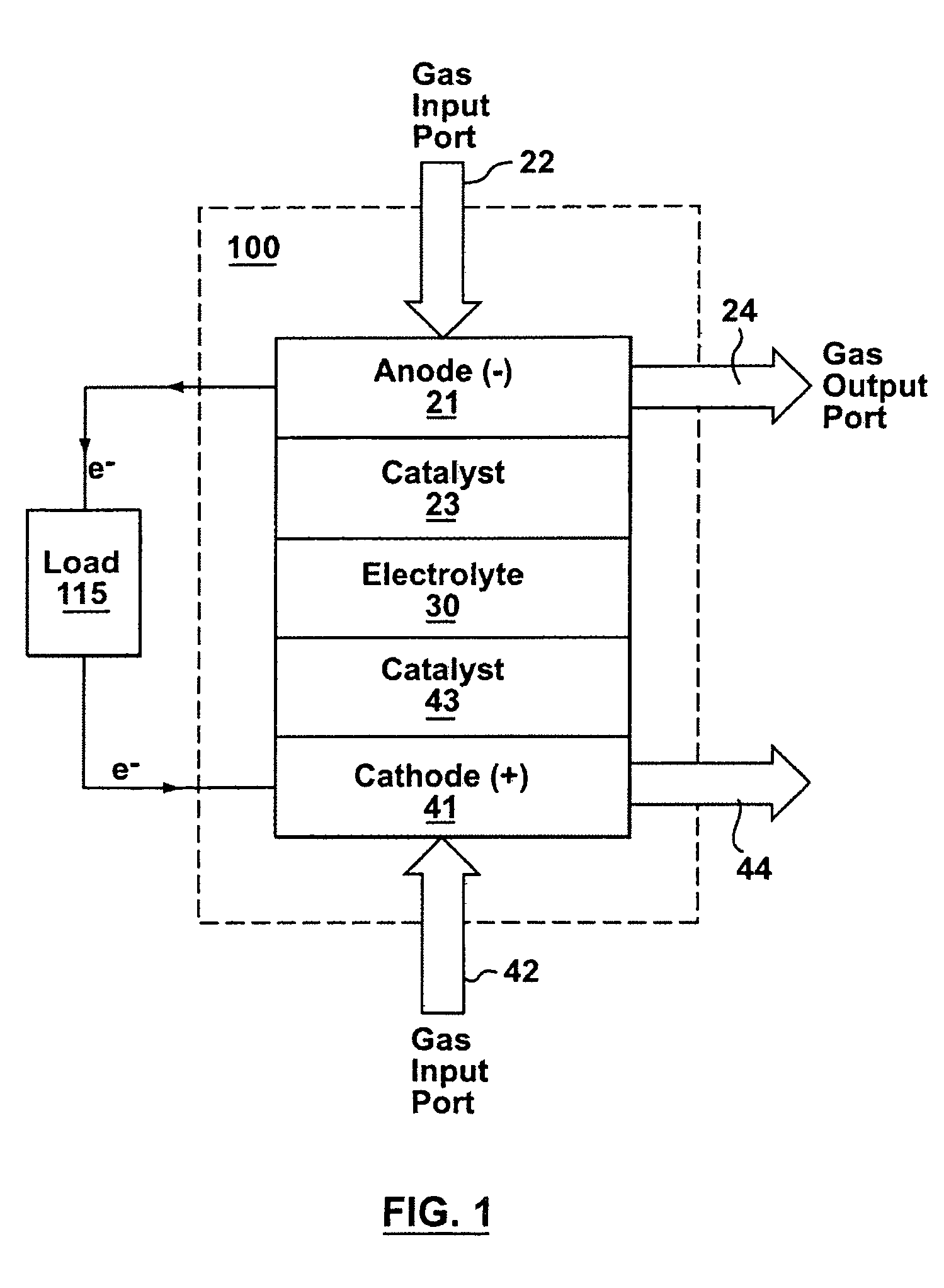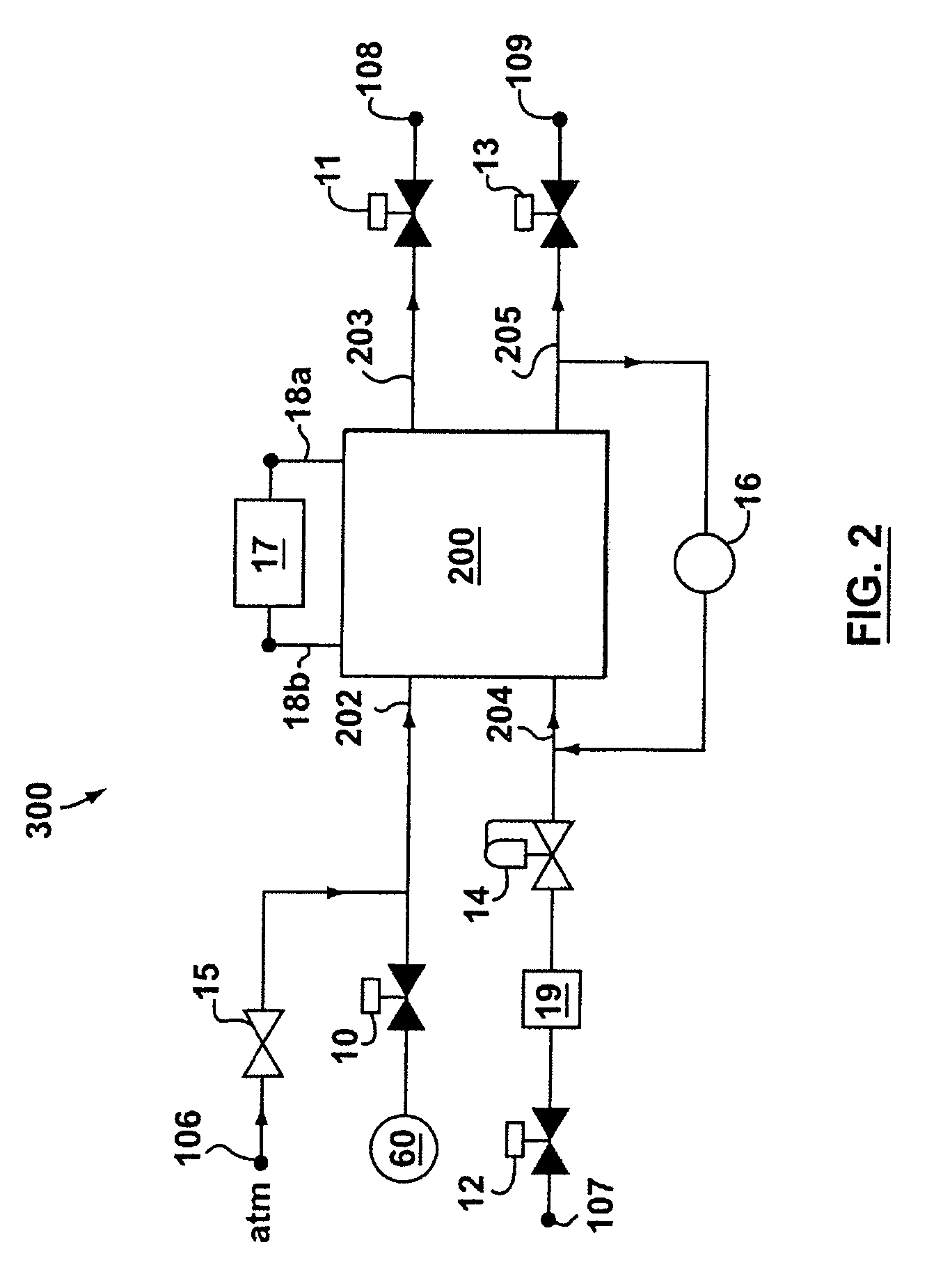Passive electrode blanketing in a fuel cell
a fuel cell and passive electrode technology, applied in the field of fuel cells, can solve the problems of small amounts of hydrogen fuel and oxidant remaining inside, increased wear and degradation rate of some components of pem fuel cells, and known combustibility during shutdown and restarting processes
- Summary
- Abstract
- Description
- Claims
- Application Information
AI Technical Summary
Benefits of technology
Problems solved by technology
Method used
Image
Examples
Embodiment Construction
[0021]A fuel cell module is typically made up of a number of fuel cells connected in series to form a fuel cell stack. The fuel cell module also includes a suitable combination of associated structural elements, mechanical systems, hardware, firmware and software that is employed to support the function and operation of the fuel cell module. Such items include, without limitation, piping, sensors, regulators, current collectors, seals and insulators.
[0022]Referring to FIG. 1, shown is a simplified schematic diagram of a Proton Exchange Membrane (PEM) fuel cell module, simply referred to as fuel cell module 100 hereinafter, that is described herein to illustrate some general considerations relating to the operation of fuel cell modules. It is to be understood that the present invention is applicable to various configurations of fuel cell modules that each include one or more fuel cells.
[0023]There are a number of different fuel cell technologies, and in general, this invention is exp...
PUM
| Property | Measurement | Unit |
|---|---|---|
| pressure | aaaaa | aaaaa |
| pressure | aaaaa | aaaaa |
| pressure | aaaaa | aaaaa |
Abstract
Description
Claims
Application Information
 Login to View More
Login to View More - R&D
- Intellectual Property
- Life Sciences
- Materials
- Tech Scout
- Unparalleled Data Quality
- Higher Quality Content
- 60% Fewer Hallucinations
Browse by: Latest US Patents, China's latest patents, Technical Efficacy Thesaurus, Application Domain, Technology Topic, Popular Technical Reports.
© 2025 PatSnap. All rights reserved.Legal|Privacy policy|Modern Slavery Act Transparency Statement|Sitemap|About US| Contact US: help@patsnap.com



